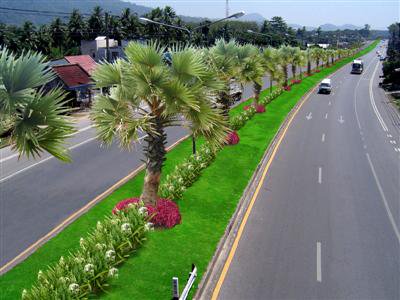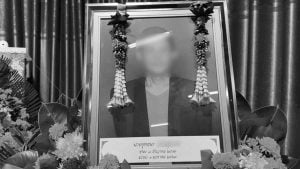Phuket Gov to launch “Project Palmyra”

PHUKET CITY: In an effort to beautify two of the island’s main roadways, the Phuket governor is keen to plant scores of Palmyra palm trees along Thepkrasattri Road and the bypass road.
At a recent meeting at Phuket Provincial Hall, Phuket Governor Wichai Phraisa-ngop raised the idea with representatives of agencies slated for involvement in the project; most seemed to agree with the initiative.
Gov Wichai said that existing plants along the median strip of Thepkrasattri Road were poorly looked after, with many dead or dying from root rot.
Planting Palmyra palms along sections of Thepkrasattri Road and the bypass road would give the island the kind of look it deserves as a world-class tourist destination.
Gov Wichai hopes the trees can be in place in time for the Asean summit meetings scheduled to take place here in October, he said.
Extolling the virtues of the Palmyra, Gov Wichai said it is an indigenous species that is attractive, sturdy and easy to grow in Phuket’s climate.
Also known as the Toddy palm, the plant is already well known in one of Phuket’s most iconic spots, Laem Phromthep in Rawai, where it is hardy enough to grow on rocky outcrops with very little soil.
“Everyone is familiar with the Palmyra at Laem Phromthep; now we can make this plant a symbol for all of Phuket,” Gov Wichai said.
Palmyra are not only attractive, but useful. A single tree can live up to 100 years, beginning to bear fruit that is the source of sugar toddy as early as 10 years of age. The fruit could be collected and sold as a source of revenue for the province, the governor said.
As for funding, Phuket MPs Tossaporn Thepabutra and Rewat Areerob have agreed to seek a budget from the central government. Additional funds could come from the provincial coffers, he said.
Under natural conditions, an Asian Palmyra can grow as tall as 30 meters.
Contract work to maintain the Palmyras at two meters high or less would be put up for auction. The winning bidder would be required to trim healthy leaves, remove dead ones and perform other maintenance work to keep the trees at the appropriate size and appearance.
The contractor would also be required to work under a guarantee that the trees are still alive one year after planting.
In order to make way for the Palmyras, existing trees and shrubs would be uprooted and replanted elsewhere, he said.
The governor discounted concerns that the trees’ extensive root systems could damage road surfaces. Others present at the meeting seemed to agree that this would not be a problem.
— Khunakorn Terdkiatkhachorn
Latest Thailand News
Follow The Thaiger on Google News:


























